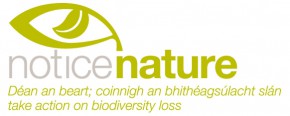The Water Framework Directive encourages the participation of all citizens, organisations and industries to actively take part in the development of management plans for their particular River Basin District. Tourism groups, anglers associations, Tidy Towns committees and members of the public should make their views known. To find out how you can get involved, go to www.gov.ie under the River Basin Management section.
- All septic tanks should be constructed in accordance with regulations. Consult the EPA Wastewater Treatment Manual ‘Treatment Systems for Single Houses’ before constructing a septic tank (see http://www.epa.ie/ under Technical Guidance and Advice/Guidance Documents
- Septic tanks need to be desludged regularly to ensure efficient operation so DO desludge when necessary!
- Never discard household hazardous liquids by flushing into drains or down the sink or toilet. E.g. paint thinners, solvents, oil, unused paint or pesticides. If in doubt read the label on the product and check for hazard warnings.
- Ensure that soiled water (from sinks, washing machines, dishwashers etc.) is discharged into a sewer and not into a surface water drain
- Always bring home your rubbish. Litter finding it’s way into watercourses can cause damage to fish gills and can clog up spawning grounds.
- One the Farm – Keep all dangerous substances stored safely and safe guard against accidental spillage. E.g. pesticides, veterinary products, oil, and artificial fertiliser. Any accidental spillages of harmful substances should be reported to the local authority. This is a requirement of law and failure to report an accidental spillage or discharge to waters may result in prosecution.
- Control and manage the collection and storage of all farmyard wastewater, including cattle manure, cattle slurry, silage effluent, soiled water from yards, manure heaps and dairy washings.
- Under the Nitrates directive there are specific requirements for the storage and spreading of livestock manure and other fertilisers. For more information, see Nitrates Information.
Back to Habitat Diversity menu
